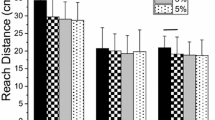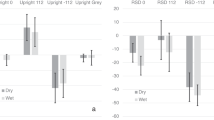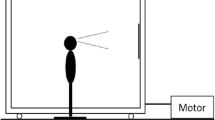Abstract.
When subjects stand at the center of a fully enclosed room that is rotating at constant velocity, their natural postural sway generates Coriolis forces that destabilize their center of mass and head. We quantitatively assessed how exposure to constant velocity rotation at 10 rpm affected postural control. Twelve subjects stood in a heel-to-toe stance in the rotating room. Each test session involved three phases: (1) pre-rotation, (2) per-rotation, and (3) post-rotation. In each phase, subjects were tested in both eyes open and eyes closed conditions. Four measures were used to characterize center of mass movement and head movement: mean sway amplitude, total power, mean power frequency, and frequency of maximum power. Each measure was computed for anterior-posterior and medial-lateral sway. Both anterior-posterior and medial-lateral head and center of mass sway during rotation had significantly greater mean sway amplitude and total power compared with pre- and post-rotation values. Mean power frequency and frequency of maximum power were little affected. Eyes open conditions were significantly more stable in all test phases than eyes-closed, but vision did not completely suppress the effects of rotation. The greatest effect of rotation was in the eyes-closed condition with mean sway amplitude and total power increasing more than twofold. Inverted pendulum sway was maintained in all phases of both test conditions. No aftereffects of rotation were present after the four 25-s exposures each subject received. We expect that with longer exposure periods and with active generation of body sway subjects would both adapt to rotation and exhibit post-rotary aftereffects.
Similar content being viewed by others
Author information
Authors and Affiliations
Additional information
Electronic Publication
Rights and permissions
About this article
Cite this article
Soeda, K., DiZio, P. & Lackner, J.R. Balance in a rotating artificial gravity environment. Exp Brain Res 148, 266–271 (2003). https://doi.org/10.1007/s00221-002-1300-9
Received:
Accepted:
Issue Date:
DOI: https://doi.org/10.1007/s00221-002-1300-9




